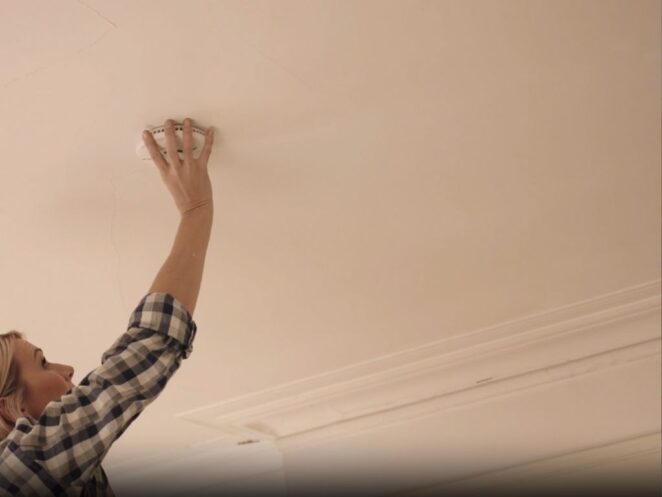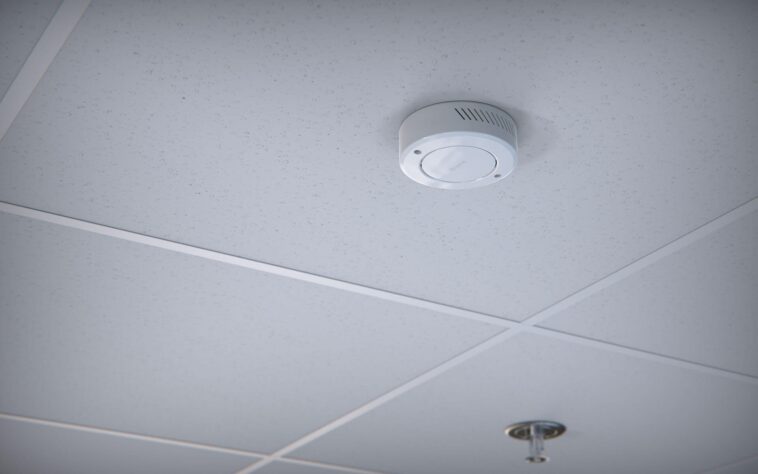In recent years, vaping has emerged as a significant public health issue, particularly among younger demographics, including college students. As vaping incidents increase, colleges and universities are taking robust measures to maintain a healthy educational environment.
Implementing advanced vape detection technology has become a popular method for monitoring and managing vaping on campus. These high-tech systems are capable of detecting chemical signatures from vapes, providing real-time alerts to campus security. In that way, they can better enforce smoke-free policies, raise awareness about the dangers of vaping, and offer early intervention for students.
Colleges looking to adopt such systems can find advanced solutions through technologies like vape detectors.
The Rise of Vaping on College Campuses
Vaping, often perceived as a safer alternative to traditional smoking, has seen a dramatic rise in popularity among college students. However, this increase has led to concerns about health risks associated with vaping, such as lung injury and nicotine addiction.
Colleges are now tasked with addressing these health concerns while ensuring that their campuses remain conducive to learning and development. This challenge has prompted many institutions to seek out effective strategies to detect and deter vaping activities, particularly in locations where students congregate.
Understanding Vape Detection Technology

Vape detectors are sophisticated devices designed to sense and alert the presence of vapor from electronic cigarettes. The technology primarily works by detecting chemicals commonly found in vape aerosols, such as nicotine, propylene glycol, and vegetable glycerin. There are two primary types (plus an additional two) of vape detectors used in educational settings:
- Particulate Detectors: These devices measure the presence of fine particles that are released into the air when a person vapes.
- Sensor Detectors: Sensor-based detectors analyze air quality for specific chemical signatures associated with vaping products.
- Gas sensors: These sensors detect the presence of specific gases that are released when vaping occurs. The gases typically include nicotine, propylene glycol, and vegetable glycerin.
- Combination sensors: These sensors combine particulate sensors and gas sensors to provide a more accurate detection of vaping.
These detectors can be installed in various areas across campuses, especially in places where traditional surveillance methods are less effective or restricted, such as bathrooms, dormitories, and locker rooms.
The sensors in vape detectors work by measuring the concentration of specific chemicals in the air. When the concentration of these chemicals reaches a certain level, the detector will alert the user that vaping is occurring.
The accuracy of vape detectors depends on several factors, including the type of sensor, the location of the detector, and the airflow in the area. However, most vape detectors can detect vaping with a high degree of accuracy.
Implementation of Vape Detectors in College Settings
Colleges are increasingly implementing vape detection systems as part of their larger campus safety and wellness initiatives. The HALO system, for example, is a popular choice among educational institutions.
It is specifically designed to detect both vape and marijuana usage in enclosed spaces where students might attempt to vape discreetly. By installing these systems in strategic locations across the campus, colleges can send a clear message to students about the institution’s stance on vaping and enforce a healthier, vape-free environment.
Effectiveness of Vape Detectors

The effectiveness of vape detectors in educational settings has been a subject of discussion among administrators. Generally, these devices are highly effective under the right conditions, providing real-time data and alerts whenever vaping activity is detected. This allows campus security to respond swiftly.
However, the presence of vape detectors alone may not entirely deter the activity. Continuous education about the risks of vaping combined with strict enforcement of campus policies is essential to reduce vaping rates among students.
Challenges and Considerations
While vape detection technology offers a promising solution to combat vaping on campus, there are several challenges and ethical considerations that institutions must navigate. Privacy concerns are at the forefront, as students may feel that vape detectors in personal spaces like bathrooms invade their personal privacy. Administrators must balance the need for monitoring and maintaining health standards without encroaching too much on individual rights.
Furthermore, the cost of installing and maintaining these high-tech systems can be significant. Colleges must consider their budgets and the extent to which they invest in this technology, weighing it against other essential campus needs.
Moving Forward: Policies and Prevention

As technology continues to evolve, colleges are encouraged to develop comprehensive policies that address vaping. These policies should not only include the use of detection technology but also focus on preventive measures such as student education programs about the health risks associated with vaping and smoking.
In addition to technological and policy measures, colleges can benefit from creating supportive environments that encourage students to seek help for nicotine addiction and other related issues. Providing resources for cessation programs, counseling, and education about healthy lifestyle choices can further support a vape-free campus initiative.
In conclusion, the integration of vape detection technology in college settings marks a proactive approach to fostering healthier campus environments. These systems, while effective in detecting vaping activities, should be part of a larger framework that encompasses educational initiatives, clear policies, and support systems tailored to student needs. It’s crucial for colleges to balance the use of this technology with considerations for student privacy and budget constraints.
Effective management of vaping on campus requires more than just installing detectors. Colleges need to continually educate students about the health risks associated with vaping and provide supportive resources for those struggling with nicotine dependence. By creating comprehensive policies that are clearly communicated and fairly enforced, colleges can enhance the effectiveness of vape detection technology and ensure it complements broader health and wellness programs.
Moving forward, it is important for educational institutions to remain adaptable and responsive to the evolving landscape of student health needs. As new challenges arise, colleges must be ready to adjust their strategies, always aiming to maintain safe and supportive learning environments. This holistic approach not only addresses the immediate concerns related to vaping but also contributes to the long-term well-being and success of all students.



